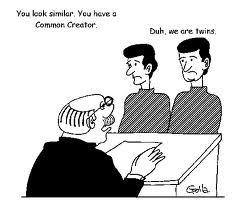
Similar fact evidence is prima facie admissible evidence? If yes, to what extent? This question can be well-examined if we consider the balance of probative value and prejudice value. Generally, irrelevant evidence is not admissible as prima facie evidence unless there is ‘additional value’ used to increase the value of weight attached in the tendered evidence. Cross has enunciated that probative force possessed by similar fact evidence squarely depends on three factors, viz: (a) cogency of evidence in showing bad disposition of the accused, (b) strength of the proof in making inference and (c) degree of relevancy between drawn inferences with the fact in issue. Those elements are prominently highlighted in striking similarity of evidence or relevant fact as coined by Lord Goddard CJ in R v Sims. Hence, if any similar fact evidence tendered for court proceeding, court will be the sole party to determine the admissibility of that particular evidence. In order to guide the judge in making an impartial decision, probative value and prejudice value will be considered. Thereon, if the latter value is more overwhelming compared to the former, adverse effect created towards the accused will be the seed of injustice. The similar fact evidence must be rejected in toto.
In a deep discussion on similar fact evidence, normal question that always plays in our mind is why the accused should be acquitted since he or she was committing the same offence in the past. Public benefit should be considered in parallel with the probability of offender in committing same offence. However, we must bear in mind that any misconduct or bad behavior committed by accused in the past should not be a justifying ground for imposing heavier punishment. One thing that we should remember is that any bad disposition of the accused has no linkage with the current indictment. This has been well-illustrated in the case of Makin v A-G for New South Wales, whereby the prosecution is forbidden to adduce evidence tending to show the accused has been guilty of other misconducts or criminal acts outside the coverage of offence charged. Thus, similar fact evidence might be relevant, but the attached value of weight is much lower than other type of evidence. It should be corroborated with other relevant facts as it could not stand on its own weight. Interrelation with other relevant facts is a precondition for the judge in determining the admissibility of similar fact evidence.
In conclusion, similar fact evidence could be accepted by the judge for attaining a fairer decision since it is applicable for reference in certain circumstances and eventually becomes a part of prima facie evidence. However, similar fact evidence might be abused and eventually creates an adverse inference over the accused in present indictment. If this is allowed to be happened, hidden danger on infringing the law presumption will be created. Heart of legal system will be totally damaged if either presumption of innocence until proven guilty or any doubt created in favour of accused has been abandoned. Spirit and functional purpose of legal system will be impaired if the hidden danger left with abuse by certain judges. Thus, even though there is no exhaustive list in identification of prima facie evidence. The yardstick that must be considered is no more than the balance of probative and prejudice values.
Prepared by
Lum Choi Yuen ^^
A129960
In a deep discussion on similar fact evidence, normal question that always plays in our mind is why the accused should be acquitted since he or she was committing the same offence in the past. Public benefit should be considered in parallel with the probability of offender in committing same offence. However, we must bear in mind that any misconduct or bad behavior committed by accused in the past should not be a justifying ground for imposing heavier punishment. One thing that we should remember is that any bad disposition of the accused has no linkage with the current indictment. This has been well-illustrated in the case of Makin v A-G for New South Wales, whereby the prosecution is forbidden to adduce evidence tending to show the accused has been guilty of other misconducts or criminal acts outside the coverage of offence charged. Thus, similar fact evidence might be relevant, but the attached value of weight is much lower than other type of evidence. It should be corroborated with other relevant facts as it could not stand on its own weight. Interrelation with other relevant facts is a precondition for the judge in determining the admissibility of similar fact evidence.
In conclusion, similar fact evidence could be accepted by the judge for attaining a fairer decision since it is applicable for reference in certain circumstances and eventually becomes a part of prima facie evidence. However, similar fact evidence might be abused and eventually creates an adverse inference over the accused in present indictment. If this is allowed to be happened, hidden danger on infringing the law presumption will be created. Heart of legal system will be totally damaged if either presumption of innocence until proven guilty or any doubt created in favour of accused has been abandoned. Spirit and functional purpose of legal system will be impaired if the hidden danger left with abuse by certain judges. Thus, even though there is no exhaustive list in identification of prima facie evidence. The yardstick that must be considered is no more than the balance of probative and prejudice values.
Prepared by
Lum Choi Yuen ^^
A129960
 RSS Feed
RSS Feed